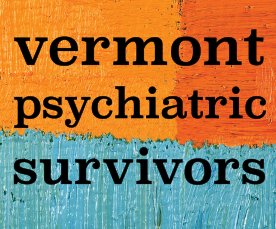Eugenics – the pseudoscience that promotes selective human breeding through policies like sterilization, marriage restriction, and family separation – became a nationwide movement in the first half of the 20th century. In Vermont, the particular concerns and preoccupations of local social reformers shaped its application.
The Vermont Historical Society published a new book in September: “Vermont for the Vermonters”: The History of Eugenics in the Green Mountain State by Mercedes de Guardiola. A corporate communications consultant based in New York City, de Guardiola is not an academic historian by trade, but one wouldn’t necessarily know it on the basis of a volume whose citations and bibliography take up nearly 50 pages.
With new research, the book tells an old story that hasn’t gone away. Just two years ago, the Vermont General Assembly issued an official apology for its past efforts to eliminate a population that it had once referred to as “imbeciles, feeble-minded and insane persons, rapists, confirmed criminals and other defectives.”
And while Vermont’s legislators have not repealed a law that still permits the forced sterilization of people with intellectual disabilities with a judge’s permission, they recently established a Truth and Reconciliation Commission that will study historic and ongoing instances of state-sanctioned discrimination until 2026. De Guardiola’s account may help.
Expanding on scholarship that has focused largely on the infamous 1925 Eugenics Survey of Vermont, “Vermont for the Vermonters” begins in the late 1800s, a period of depopulation in the countryside. Many of the state’s farmers had fled to cities elsewhere for work or to try their luck on abundant free land in the West.
Vermont’s rural communities suffered visibly, and nostalgists blamed their decline on a deterioration of their gene pool. In the popular imagination, virile 18th-century frontiersmen like Ethan and Ira Allen still embodied the spirit of the Green Mountains, but their legends couldn’t conceal an increasingly bleak landscape in which invalids and madmen, as their social betters of “old stock” saw them, seemed now to predominate.
In the early 20th century, according to de Guardiola, a new economic emphasis on tourism added financial stakes to the conflict between Vermont’s self-image and its reality. In an “oversaturated market of New England rural purity,” Vermont’s presentation of Yankee wholesomeness couldn’t afford any black marks.
Between 1866 and 1915, the state took action, founding three major institutions: an insane asylum (the Vermont State Hospital in Waterbury, built to supplement the private Brattleboro Retreat) and two quasi-educational facilities (the Weeks School in Vergennes for juvenile delinquents and the Brandon Training School for children with developmental disabilities). De Guardiola offers a history of each.
Institutionalization ultimately served a eugenical end insofar as it worked merely to isolate perceived contagions, such as “insanity,” from the rest of humanity. But many early advocates sincerely believed that modern facilities with staff trained in the latest medical techniques could improve the lives of society’s vulnerable outcasts. Before long, however, overcrowding precluded even a crude form of treatment as a legible aim.
The absence of a modern welfare state contributed to the problem. Courts took pity on orphans and invented minor crimes that would have them placed at Vergennes, where they would at least have food and shelter. Normal public schools failed to accommodate not only children with developmental disabilities but also those with physical ailments, who ended up at Brandon instead. And when Brandon’s students aged out, Waterbury sometimes followed – not because they needed psychiatric care but because they had nowhere else to go.
As new allocations of funding from the legislature failed to keep pace, the institutions used forced labor by their residents to stay afloat. At Waterbury, patients tended a 700-acre farm whose crops “not only supplied hospital needs, but were also sold at a profit,” alongside handcrafted goods whose making supposedly functioned as occupational therapy. In an environment where patients had to “crawl over other beds to reach their own beds,” therapy didn’t work, which seemed to prove the hereditary nature of their problems.
Of the three institutions, Waterbury was the last to close, nearly half a century after President John F. Kennedy signed the Community Mental Health Act of 1963. By 2011, a popular association with the evils of Nazi Germany had long ago discredited eugenics – though de Giardola hypothesizes a lasting influence from its “decentralized education programs, which relied on successive generations of students and teachers to propagate eugenical ideals without necessarily understanding their origin in eugenics.”
“Vermont for the Vermonters” takes care to depict American eugenics as a fad of the Progressive Era, not as a product of a conscious fascism. Forward-thinking academics, social workers, and philanthropists saw in it “a civilized answer to social ills,” whereby the miserable creatures of the world would someday simply cease to exist.
Progressives didn’t stand alone. Eugenics often contained a racist focus, and as de Guardiola points out, the Ku Klux Klan embraced the idea. And in Vermont, some eugenicists singled out French Canadians, whose population, according to rumors, had mixed liberally with the Western Abenaki.
But racism was not a necessary component. The author Elin Anderson, working as an ethnographer in Burlington, lamented in 1937 that “racial and religious prejudices frequently stand in the way of the realization of any ideal biological blending.”
For compassionate reformers, the legalization of forced sterilization represented a particularly important goal because it offered a chance to release patients from increasingly run-down institutions without risk that they’d use their freedom to procreate. To their chagrin, Governor Allen M. Fletcher had vetoed a sterilization bill in 1912, and courts had struck down the practice in other states.
The US Supreme Court, however, finally presented a green light in 1927. And advocates in Vermont got their wish in 1931, when the efforts of the state’s most famous eugenicist, Henry Perkins, culminated in the passage of law that, according to the records of the Department of Public Welfare, led to about 250 surgeries over the following two decades.
A University of Vermont professor and the first director of its Fleming Museum of Art, Perkins had founded the Eugenics Survey of Vermont. It operated as an ostensibly private organization, although, in de Guardiola’s telling, “UVM sponsored it” and “numerous public officials served in it in their public roles.”
The author details the shoddy methods of the project’s fieldworkers, who hunted down signs of “degeneracy” among Vermont families in confidential medical records willingly surrendered by public institutions and in interviews with Vermonters themselves. Per de Guardiola, these methods included, at times, fabrication.
What does all this have to do with Vermont in 2023? If a throughline connects yesterday’s teeming institutions to today’s prisons, psychiatric hospitals, and group homes, the Truth and Reconciliation Commission will have to locate it. “Vermont for the Vermonters” is a compilation of facts, not a projection of theory.
De Guardiola follows her story to the present, however, where she takes the common view that deinstitutionalization went too far. She praises two remaining relics of the 1800s – the Brattleboro Retreat and the Lund Home for new mothers – for their “high-quality in-patient care” and asserts a contemporary shortage of psychiatric beds.
In the author’s view, community-based mental health services have “largely failed to address care and treatment needs for the severely mentally ill and disabled.” She laments that, while the Vermont Department of Mental Health’s charge to provide care in the “least restrictive” environment “protects individual rights, it can also lead to a lack of sorely needed ongoing treatment.”
Some psychiatric survivors may feel differently.

